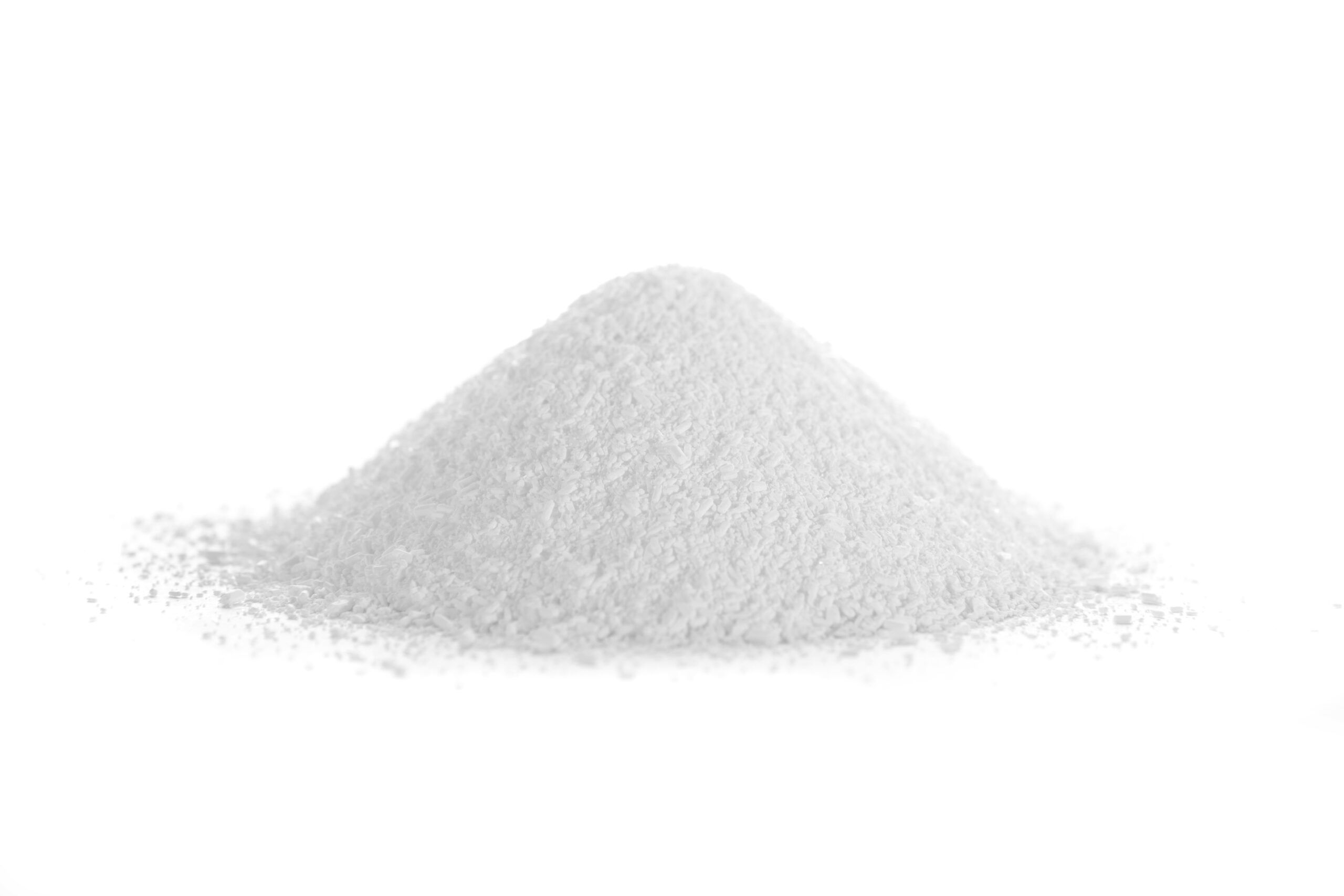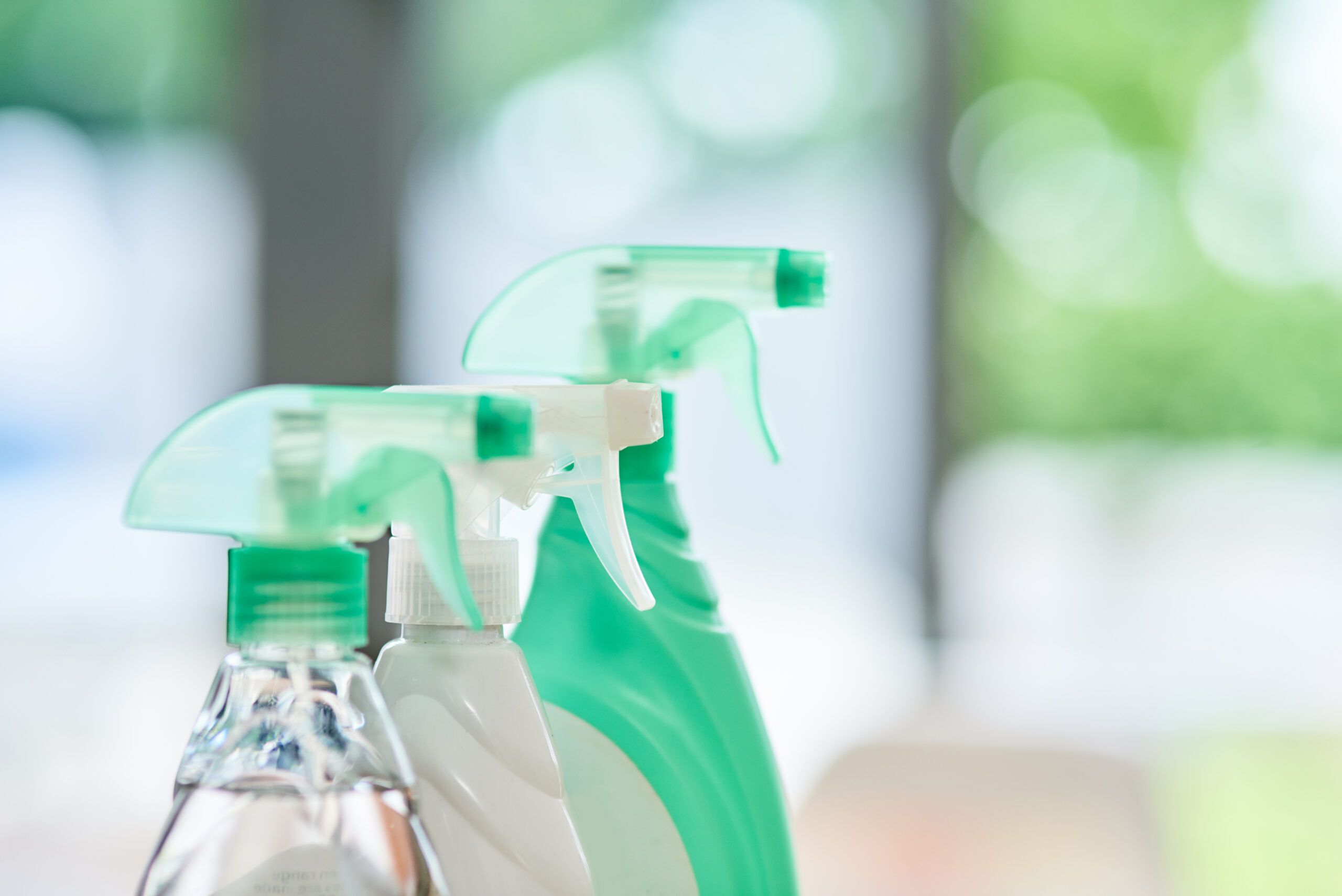If you need a heavy-duty cleaner to tackle tough messes, trisodium phosphate (TSP) might be the solution. Whether you need to prep a long-neglected exterior surface for painting or remove years of caked-on grime behind your oven, TSP’s powerful cleaning action can help you get the job done. However, this potent, inexpensive cleaning product also has its drawbacks.
Our guide explores the pros and cons of TSP to help you decide if it’s the right cleaner for your needs. We’ll also explain how to use TSP safely and explore a few alternatives.
What Is TSP?
Trisodium phosphate is an inorganic chemical compound (Na₃PO₄) that takes the form of a white granular or crystalline substance. When mixed with water to create an alkaline solution, TSP is a highly effective cleanser, degreaser, and stain remover. It’s also used to prep painted surfaces for refinishing or repainting, as it can both de-gloss paint and remove flaking or peeling areas.
TSP is typically sold in powder form as a mixture of 75% to 80% trisodium phosphate and 20% to 25% sodium carbonate. It should be stored in a secure, dry place to prevent clumping.
Though TSP is primarily known as a cleaning product, it does have other uses. You may see it listed as an ingredient in certain foods, such as cereal, where it helps improve the texture or shelf life. It can also be used to adjust the pH levels of pool water or toothpaste, prepare metal surfaces for paint, or remove rust.
Is Trisodium Phosphate Safe To Use?

TSP is a powerful cleaner that comes with a few risks. It is classified as a toxic substance that can harm humans, pets, plants, and aquatic life. It can also damage many common household surfaces.
Health Risks Associated With TSP
Exposure to TSP can cause serious eye injury and skin irritation, even in diluted form. TSP can also be harmful if swallowed or inhaled.
We recommend wearing long pants and sleeves, waterproof gloves, goggles, and a respirator when preparing and using TSP. This helps minimize direct contact and inhalation of TSP particles. For more detailed safety information, consult the Safety Data Sheet provided by the manufacturer.
Environmental Impacts of TSP
Trisodium phosphate was a common ingredient in household cleaners and detergents up until the late 20th century, when it was found to cause eutrophication. Basically, the high phosphate content in TSP runoff can trigger excessive algae growth in lakes and rivers, which depletes oxygen levels and harms the fish, animals, and aquatic plants that live there.
Due to these adverse effects, TSP is now banned or restricted in many states and cities, but regulations vary. Consult your state’s Environmental Protection Agency, health department, or Department of Natural Resources’ water quality division for local laws.
If you decide to use TSP outdoors, take care around foliage. Opt for a windless day if possible, and hose down landscaping before and after use to avoid damaging plants.
Damage to Household Surfaces
TSP is not an all-purpose cleaner. Its high alkalinity makes it corrosive to certain materials in and around your home, such as:
- Bathroom fixtures: can corrode and tarnish metal bathroom fixtures, leading to discoloration and pitting
- Metal drains and pipes: corrosion can eventually cause leaks in metal pipes and drain components
- Glass and ceramic surfaces: can etch mirrors, shower enclosures, and tiles, turning them dull, cloudy, or permanently marked
- Porcelain and enamel: can damage the protective glaze on porcelain and enamel fixtures, leaving them rough, porous, and more susceptible to staining
- Grout: can dissolve and weaken tile grout, causing it to crumble and deteriorate over time
- Painted wood: can strip paint or varnish from treated surfaces and leave the wood itself warped or discolored
Where Is TSP the Most Effective?
Despite the risks, TSP provides unmatched cleaning power for specific tasks. If you proceed cautiously and follow the proper safety precautions, you may use TSP for the following tough cleaning jobs:
- Exterior cleaning: Power through accumulated layers of dirt, grease, grime, soot, and stains on exteriors—notably masonry (brick, stone, cement, and concrete), wood (decks and siding), and roofing.
- Paint prep: TSP can clean and de-gloss painted surfaces and remove old, flaking paint.
- Cutting through grease and grime: Inside the house, TSP works well on the stubborn sort of grease-meets-dirt gunk typically found after pulling an old stove or fridge away from the wall.
- Grout removal: Though TSP shouldn’t be used to clean grout, it is an active ingredient in grout removal products. Just remember this harsh chemical can damage the surrounding tile if not used carefully.
- Mold and mildew removal: You can safely mix TSP with bleach to get rid of mold and mildew (see below for measurement guidelines).
Check out the video below to see TSP in action. Painter Jim Clark uses rubber gloves, abrasive pads, and a TSP solution to prepare aluminum siding for a fresh coat of paint. The chlorine bleach in the solution kills the mildew, while the TSP begins breaking down the pigment residue for a fresh surface.
How To Use TSP Safely
Always read and follow any manufacturer instructions, heed all safety warnings, and don personal protective equipment (PPE) when mixing and using TSP. Work in a well-ventilated area and use the least amount of TSP that will be effective for your purposes. Never mix TSP with other cleaners or chemicals, except as directed below for mold and mildew removal.
General Preparation and Application Instructions
Start by dissolving TSP in warm water to create a slightly cloudy, odorless solution. A good general ratio is 1/2 cup of TSP to 2 gallons of water. You can use a slightly stronger batch to combat mold and mildew—mix 1 cup of TSP with 3 quarts of warm water and 1 quart of chlorine bleach.
This solution can be funneled into a spray bottle or applied with a stiff scrub brush or sponge. Work in sections, applying the solution in liberally and using some elbow grease. Allow the solution to sit on the surface for 10–20 minutes, then rinse thoroughly with clean water to remove any TSP residue. Repeat the process as needed for stubborn stains or thick grime.
Safely Storing and Disposing of TSP
Store TSP in its original container with the label intact. Keep it in a cool, dry place out of reach of children and pets.
If you need to dispose of TSP, research household hazardous waste (HHW) regulations. Many jurisdictions have special rules for disposing of corrosive items like TSP. Contact your local environmental, health, or solid waste agency for information about HHW dropoff locations or collection events.
Do not pour leftover TSP solution or rinse water down the drain or onto plants. If you have a small amount of leftover TSP solution, you can dilute it heavily with water and use it to clean outdoor surfaces like driveways or sidewalks.
You can also neutralize the alkalinity by adding a mild acid, such as vinegar, before disposal. However, this step may not be necessary, depending on local regulations.
Where To Buy TSP
Though several states and cities have banned or restricted the sale of TSP, it is still available to you. Some hardware stores and home improvement centers may still carry TSP in powder or liquid form. Check with your local stores to confirm availability.
TSP can also be purchased online from various retailers. However, be sure to check the regulations in your area before ordering.
If TSP has been banned where you live, look for a biodegradable, phosphate-free alternative. TSP substitutes are widely available in stores and online.
What Are the Alternatives to TSP?
Several TSP alternatives offer effective cleaning power with fewer risks to health and the environment.
- Phosphate-free TSP: An erroneously named phosphate-free version of TSP exists, which relies on sodium sesquicarbonate as its main ingredient. These products are a more environmentally friendly option, but they may not be as effective at cutting through heavy grease.
- Biodegradable cleaners: Several brands offer biodegradable cleaners specifically designed as TSP substitutes. One example is Krud Kutter. These cleaners are often safer for both humans and the environment, but their effectiveness varies.
- Sodium carbonate: Sodium carbonate, also known as washing soda, is a powerful cleaner and degreaser that can tackle many of the same tasks as TSP. It’s less caustic than TSP but can still irritate skin and eyes, so use it with caution.
- Borax: Borax is a natural mineral with cleaning and disinfecting properties. It’s less harsh than TSP and can be used on various surfaces, but it’s not as effective at cutting through heavy grease.
- Baking soda: While not as strong as TSP, baking soda is a versatile cleaner that can tackle lighter grime and stains. It’s safe for most surfaces and a good option for gentle cleaning.
- Vinegar: White vinegar is a natural cleaner and disinfectant that can be used on many surfaces. It’s particularly effective at removing mineral deposits and soap scum.
- Commercial degreasers: Many commercial degreasers are formulated to cut through grease and grime without the harshness of TSP. Look for products that are biodegradable and phosphate-free.
The best alternative to TSP depends on the specific cleaning task and your personal preferences. Some alternatives may not be as strong as TSP, so choose one that’s appropriate for the level of cleaning required. Prioritize cleaners that are safe for your family, pets, and the environment—and compatible with whatever surface you plan to clean.
Our Conclusion
Trisodium phosphate boasts impressive cleaning power, easily tackling messes that other cleaners can’t touch. Unfortunately, it also poses serious risks to your health, the environment, and household surfaces.
Before using TSP, carefully consider your options. Safer and more environmentally friendly alternatives, such as phosphate-free TSP or washing soda, can handle most household messes, but TSP is still the most effective product for some tasks. If you do go with TSP, be sure to read and follow the manufacturer’s instructions and any local regulations to ensure safe usage and disposal.

